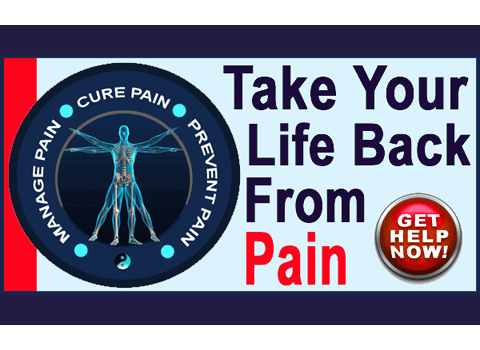
Lower back pain from lifting can occur during fitness activities, work, at home or virtually anywhere, due to injury or perceived injury. The lower back can be traumatized by lifting heavy weight or even by lifting moderate weight under less than ideal circumstances. However, we also see many cases where lifting acts as nothing more than a trigger for pain to begin, rather than an actual verified contributor to the symptoms.
Lifting is well known to be a common instigator of low back pain problems. Some people lift once and seem damaged for life, often reporting ongoing pain decades later. Meanwhile, others lift tremendous loads daily, but never experience any pain whatsoever. Human anatomy and capabilities certainly do vary from person to person, but something always seemed quite unscientific to us when researching the link between lifting and the occurrence of dorsalgia syndromes. We are thrilled to share our findings on the subject over the last 15+ years of research and clinical experience.
This focused dialog provides a completely new look at the relationship between lifting and the occurrence of low back issues. If you really want the full story on this common patient topical inquiry, you came to the right place, as no other web resource provides this proprietary information, but instead relies on the same tired non-evidence-based data that has been propagated for decades, much to the detriment of the dorsopathy patient population.
Types of Lower Back Pain from Lifting
Lifting-related pain falls into 2 basic categories that can be further broken up into subcategories of causation:
First, we have actual injury that is committed against the low back due to the pressure of lifting too much, lifting with poor form or lifting and suffering some catastrophe during the act, such as falling, slipping, etc. Of these category 1 occurrences, injury can be further divided in categories of spinal trauma and soft tissue trauma. Spinal trauma will damage the vertebral column itself, potentially causing fracture of vertebral bones and/or herniation of intervertebral discs. These circumstances represent the least likely consequences of lifting. Soft tissue trauma involves damage to the muscles, tendons or ligaments of the lower back. This form of injury is much more common and can affect a wide range of tissues individually or in combination. Since the postural musculature of the lower back is complex, multi-layered and mutually-dependent, trauma to any one structure can have wide-ranging collateral consequences in terms of pain, limited range of motion and generally diminished physical functionality.
Second, we have the very common occurrence where lifting produces pain and therefore creates the perception of injury. However, no actual trauma has occurred beyond possible small strain conditions that would be considered clinically insignificant. Regardless, pain exists, leading the patient to believe that they were injured while lifting. This pattern is a common strategy of mindbody pain disorders, such as tension myoneural syndrome. It is also a common psychosomatic escalating factor to previous structural pain issues, often leading to recurrent episodes of suffering even when the initial trauma has long since resolved.
Lifting Causing Spinal Injury
Injury to the spine can be a serious occurrence. Fortunately, this scenario presents the least likely outcome of lifting even the heaviest loads. The back is designed so that the muscles will generally fail before the skeleton. Of course, specific health issues and abnormalities in the spine, combined with exceptionally strong muscles, might reverse the usual trend of trauma, facilitating spinal damage.
The most often seen type of spinal injury due to lifting is an acute herniated disc or ruptured disc, most commonly at L4/L5 or L5/S1. This occurrence is further aided when the person is lifting a very heavy load in an awkward position with a bent back, utilizing the lumbar spine as a lever, rather than relying on the power of the legs.
Vertebral fracture is very rare, but can occur when the structures of the lumbar region are compromised by prior injury or surgery, such as at the site of previous spinal laminectomy or spondylodesis, or have been compromised by excessive degeneration, age or pone porosity. In the elderly, compression fractures are commonly seen in the lower back after lifting any considerable weight. Fairly, we should also report that due to poor physical condition and the epidemic of obesity in older people, compression fractures are very common simply from the weight of the body alone, with no lifting needed to facilitate further trauma.
Additional factors that may contribute to injury to the lumbar spine due to lifting include:
Pars interarticularis irregularity or injury often lead to full spondylolisthesis when stressed by heavy lifting.
Unstable spinal conditions often lead to vertebral fracture even when lifting light to moderate weights.
Extreme hypolordosis might increase the chance of spinal trauma when lifting due to a lack of shock absorption properties in the overly-straight spinal column.
Lower Back Pain from Lifting Causing Muscular Injury
Muscular injury is the expected result of most cases where excessive lifting causes tissue trauma. Muscles, tendons and ligaments can all suffer damage from lifting too much weight, as well as when lifting for a long time and exhausting the structures beyond their physical capacity.
Most significant soft tissue injuries will hurt immediately, but will actually worsen over the first 24 to 48 hours, as inflammation and related-tissue dysfunction occur. However, despite often debilitating pain, most muscular injuries are not serious and will fully resolve within a short time frame of about a week. The exceptions to this rule are very rare cases where soft tissues are actually torn from of their detachment points, which often requires professional medical attention to resolve.
Lifting Causing Perceived Injury
Perceived injury is very difficult, if not impossible, to differentiate from actual injury, since its onset of occurrence can be linked to circumstances that can actually injure. We have seen countless patients, over many years time, who swore that they were injured when lifting some object, as well as from other common exertions, such as opening a garage door, starting a lawn mower, prying free a stuck window, opening a jar, etc. In all of these cases, the act which was blamed for causing the pain was merely a trigger, rather than a true cause. There was no damage suffered and any diagnosed evidence of trauma was old, pre-dating the occurrence, often by decades.
Perceived injury is a common weapon and great facilitator of psychogenic pain syndromes. The mind will take the opportunity to create pain when the circumstances are right, such as following some occurrence that is known to potentially be traumatic. Likewise, psychosomatic influence of structural pain (such as in a patient who already knows that they have a herniated lumbar disc) is an incredibly common facilitator of pain, even when no further trauma has been suffered. The patient expects exacerbated pain when performing physical exertions and so it occurs due to purely mindbody interactions, rather than any trauma inflicted.
In our collective western medical experience, perceived injury accounts for the vast majority of pain following lifting, totaling about 90% of all reported cases. Actual injury to soft tissues accounts for about 8% of all lifting related complaints. Meanwhile definitive spinal injury accounts for only about 2% of the total patient population who cites lifting as the cause of their pain. With these kinds of statistics, medical providers need to take a serious look about how patients are managed and why patients are so prone to developing pain due mostly to the nocebo influence of the incorrect anatomical information they have received from doctors, media or general sources. As long as the general population views the lower back as being easily damaged, we expect to see theses statistics continue.
Just know that in identically huge samples of humans in some geographical areas, people lift daily, performing heavy labor jobs for decades, 6 or 7 days a week and virtually no one reports back injury. These people do not perceive lifting to be dangerous and so they do not experience pain. If purely anatomical factors were at play, this would never occur, demonstrating how the mind is more responsible for most lifting-related “injuries” than the actual weight lifted could ever be.
Lower Back Pain > Low Back Pain > Lower Back Pain from Lifting






